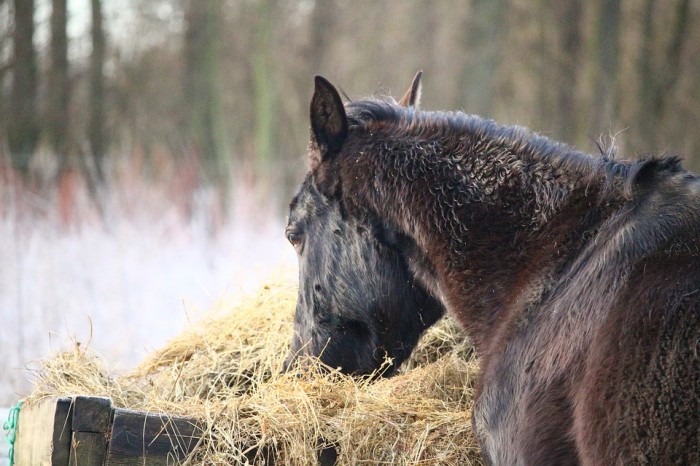
Long-stemmed vs. cut haylage in bales.
Information on how different types of forages and forage treatments during harvest affect eating behaviour and digestion in horses is scarce in the published literature. A combined ensiling and feeding experiment was therefore conducted with the aim to compare fermentation and aerobic storage stability in cut and long-stemmed haylage bales, as well as effects of feeding cut and longstemmed haylage on equine eating behaviour and on faecal characteristics (i.e. particle size distribution
and chemical composition).
The horses used in study were of European Warmblood type. The experimental design of the feeding experiment was a cross-over with 10 horses divided into two groups in two periods, with each period being four weeks. All horses being fed both forages in two periods.
The newly baled cut crop did not differ in chemical composition from the newly baled longstemmed crop, except for the content of Mg which was slightly higher in the cut crop compared to the long-stemmed. Bale characteristics, fermentation and aerobic storage stability was similar between cut and longstemmed haylage originating from the same grass crop.
Horses fed cut haylage had a slightly higher faecal pH and a slightly lower content of acetic acid in faeces than horses fed long-stemmed haylage. These differences were however small, and larger differences in both pH and n-butyric acid occurred between individual horses.
Horses expressed small differences in eating behaviour when they were fed cut or long-stemmed haylage, with a slightly higher chewing rate for the cut haylage.
No biologically important differences in chemical composition or distribution of particle size occurred in faeces from horses fed cut or long-stemmed haylage.
The implication of this finding on a feeding period longer than four weeks is not known.
> From: Müller, Animal Feed Science and Technology 152 (2009) 16. All rights reserved to Elsevier B.V.. Click here for the online summary.


